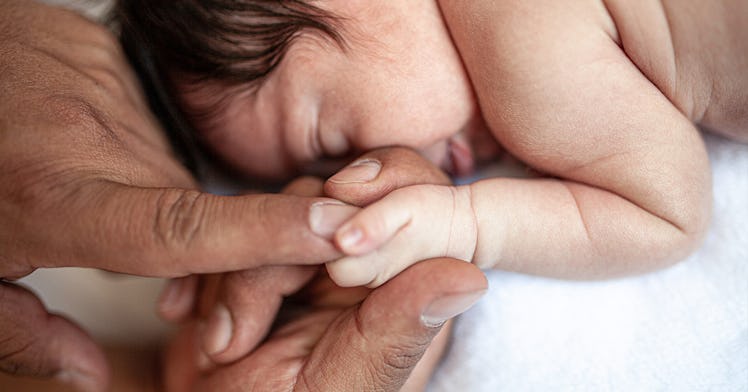Costs And Success Of The 6 Most Common Infertility Treatments
Because sometimes boning isn't getting the job done.

A couple confronted with infertility while trying to conceive can feel particularly hopeless. In the dim past, people may have whispered to one another behind their hands about the poor, barren, childless couple. But thankfully, as future people, living in a world of technology and promise, there is hope. And those awful whispering jerks are all dead.
More importantly, there are plenty of medical options that can lead to a couple delivering a healthy baby into the world. Here are the possibilities open to modern couples looking for a kid of their own, and the vital statistics associated with each.
Intrauterine Insemination (IUI)
This procedure injects prepared sperm directly into the uterus to increase the chance an egg is fertilized. People also know the procedure by the term artificial insemination. Doctors often pair IUI with a slate of infertility medications that boost egg production and improve implantation of a fertilized embryo.
Cost: Because it is so often paired with drug therapies, the cost of IUI tends to compound. However, using it alone with your own prepared sperm will run between $300 to $800 per cycle.
Success Rate: The more cycles of IUI you undergo, the more likely you will become pregnant. Success rates can reach as high as 80 percent.
Medications
Doctors use about 6 common medications to treat infertility. They exist in different formulations under dozens of brand names. Basically, a doctor might inject them or you may take them orally. A class of hormones called gonadotropins are usually injected.
Women exclusively use most of these medications. However, the same hormonal factors that govern egg production also govern and stimulate sperm production. So men can use a couple of the medications. That said, these medications’ effectiveness on men is limited compared to the drugs’ performance in women.
Cost: Doctors will use these drugs in concert with IUI and ultrasound monitoring. A cycle of oral medication will cost up to $700 a month. If the medication is an injectable hormone, the cost will be higher, topping out at $3,500 (with IUI and ultrasound).
Success Rate: The most popular fertility drug, Clomid, was recently found by an independent study to have a 23 percent success rate. Injectable hormones have a 15 percent success rate.
Assisted Reproductive Technology (ART)
The next step up in fertility treatments requires fertilizing an egg outside of the body before putting it back into the womb for implantation. These technologies are much more expensive and require a bit more time and effort.
In Vitro Fertilization (IVF)
There are several variations of IVF. The way doctors implant the fertilized embryo in your partner’s body is what differentiates the procedures. In general, IVF can use the sperm and egg of you and your partner, or rely on donor sperm or eggs, or both, in circumstances where there are significant reproductive system issues.
Intracytoplasmic Sperm Injection (ICSI)
This is the process of injecting a single sperm cell into your partner’s egg (or in some cases a donor egg) for fertilization. Doctors will suggest this procedure if you have an issue with male infertility.
Surrogacy
Surrogacy is when a woman elects to carry a child for you and your partner. In traditional surrogacy, the surrogate also provides her own egg for fertilization. In this procedure, there is no biological relationship between your partner and your kid.
Gestational Carriers
This process will include an individual who elects to carry a fertilized embryo from your partner’s egg and your sperm. There is no genetic relationship between the surrogate and the child.
Cost: Traditional IVF will generally top out around $14,000. However, expect that figure to nearly double if electing to use donor eggs, which can cost up to $25,000. Surrogacy adds even more cost due to special considerations for the woman carrying the child. Expect to pay up to $100,000.
Success Rate: The Centers For Disease Control and Prevention tracks the success rate of ART as a whole. For women under 35, there is a 40 percent chance ART will be successful. However, that percentage drops as your partner’s age advances, with 44-year-old women only seeing a 2 percent chance of a successful live birth.
This article was originally published on